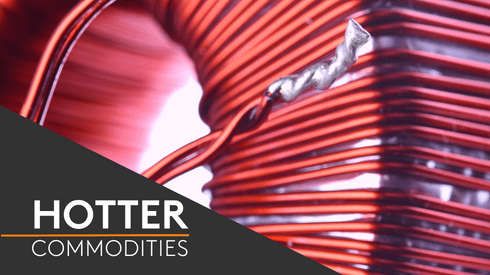One major bottleneck affecting the development of new copper supply was the permitting process, Iván Arriagada, chief executive officer of London-listed Chilean miner Antofagasta, said at the Financial Times Mining Summit in London on September 26.
“Just as an example, to do these projects, we need more than 400 permits to be able to get moving,” Arriagada said, referring to the company’s plans to expand copper production to 900,000 tonnes per year in the next three or four years, from 700,000 tpy.
A scarcity of copper concentrate supply from mines has forced down the treatment costs that smelters charge miners for material. Fastmarkets’ copper concentrate TC/RC index began to fall in November 2023 and has hovered near all-time lows so far in 2024.
Fastmarkets calculated the weekly copper concentrates TC index, cif Asia Pacific, at $2 per tonne on September 27, up from $(1.90) per tonne a week earlier.
Market dynamics were exerting a significant effect on negotiations for long-term agreements.
Nicholas Snowdon, head of metals and mining research at Mercuria, pointed out that the appearance of negative treatment and refining charges (TC/RCs) in the concentrate markets was “historically unprecedented,” indicating the strains on supply.
He added that this was “creating dislocations and volatility in both the physical market and the paper market,” making it necessary for “further risk mitigators to come in and support that function for market participants.”
New copper regions emerging
The copper supply landscape was evolving, with different regions presenting unique advantages and challenges.
Snowdon noted that the Democratic Republic of Congo (DRC) and Zambia “have gone from being the fourth- or fifth-biggest area of copper production, if you go back to the end of the last decade, to now [being] essentially just behind [the leading supplier] Chile.”
Snowdon added that this success story “does look to have momentum [that will continue] over the next couple of years.”
Arriagada highlighted the comparative advantages of different regions. “In the case of the DRC, grade is obviously a key element,” he said. “If you look at places such as Chile or Peru, grades are lower, but the deposits tend to be larger… They sit in places that have different political contexts.”
He also noted that Chile was a member country of the Organization for Economic Co-operation & Development (OECD), where “logistics are much simpler.”
“We spend less than 10 cents per lb on logistics,” Arriagada said. “In some places in the DRC, you [need to] spend ten times more.”
Argentina was also attracting attention as a potential region for new copper supply. “Some of the changes are very positive,” Arriagada said. “What’s been happening in Argentina, and what we’re seeing in terms of signals – we wait to see how those consolidate over time.”
What to understand more about what’s ahead in the copper industry? As copper prices reach record highs and analysts warn of ‘unsustainable deficits’, we explore the key trends shaping the copper market. Read more here.
Environmental paradox
Metals such as copper were needed to fight climate change, but their mining operations were a major contributor to greenhouse gas emissions.
Publicly listed mining companies, such as Antofagasta, were coming under increasing pressure from shareholders to minimize their carbon footprint, but implementing green mining technologies would add further to the costs of production, delegates heard.
Antofagasta’s operations were now “running fully on renewable energy,” Arriagada said, with 90% of water use expected to come from desalination by 2026. The company has also begun to use autonomous fleets and water recovery technologies.
Tora Leifland, head of public affairs at Volvo Construction Equipment, said that significant productivity gains could be derived from electrically powered equipment. For volume production of machinery, for example, she said, it was necessary to bring the cost down.
Cost is a barrier to change, not only in the mining industry, but in all customer sectors. New technologies are more expensive initially.
The mining market has seen a number of significant acquisition attempts recently, the largest being BHP’s attempted takeover of Anglo American.
“We look at [mergers and acquisitions] from the point of view of the extent to which it will allow production actually to increase, or reach the market in shorter timeframes,” Arriagada said. “Therefore, [such activity is] based on synergies – which is, I think, the key element that one would look at.”
Kenta Saito, general manager of the base metals division at Mitsui & Co, suggested that while M&A could be one approach to increasing supply, “the ultimate objective is really to increase every tonne of copper or whatever that is being produced.”
The panel at the event emphasized the need for increased dialogue between industry and governments on critical minerals supply.
Leifland called for supportive policies such as carbon pricing. “If you get the incentives right on a global level,” she said, “ideally, a lot of positive things will follow.”
Find out about our market-reflective copper price data spanning the copper supply chain, from copper concentrates and copper wire to copper scrap. Learn more.






